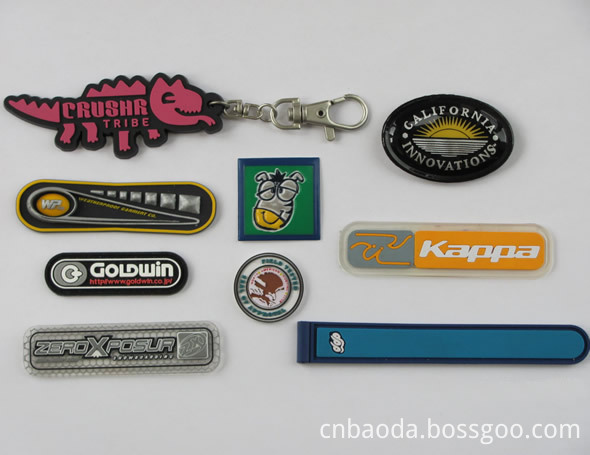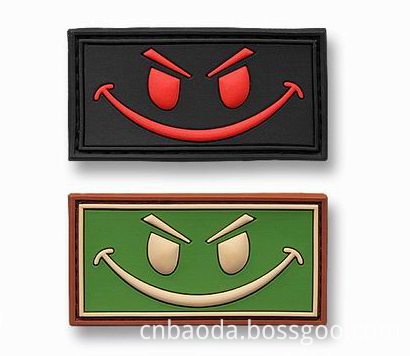In the second quarter of this year, the sales of apparel-based electricity suppliers reached 44.5 billion yuan
Baoda Fashion Accessories co., Ltd was established in 2002, located in Yiwu International Commodity City, Zhejiang,China. We have been specializing in fashion jewelry and jewelry accessories for more than 10 years. What's more, we provide varieties of fashion bracelets, necklace, rings, hair accessories.....
The size, color and design also can be customized according to your requirements.
Our rubber patches come separately packed and individually sealed in little plastic envelopes. This way you are able to easily wear your patch on anything you like! Simply stitch on your favorite jacket and your team patch will have an additional home! Format: up to 100x100mm, any shape.
Rubber Patch, Rubber Velcro Patch, Rubber Boot Patch, Rubber Repair Patch BAODA FASHION ACCESSORIES CO.,LTD , http://www.cnbaoda.com
At the meeting, Cao Lei, director of the China E-Commerce Research Center, released for the first time the "2011 China E-Commerce Application Report in the Apparel Industry", which revealed the current status, characteristic patterns, and development trends of China's apparel e-commerce industry. The report analyzes the data, development status, and business model of China's apparel e-commerce market in 2011, and conducts an in-depth dissection of typical e-commerce cases and data interpretations such as Taobao.com, Vanke Eslite, China Apparel.com, Intime.com, and GXG. It also forecasts the future development of e-commerce in the apparel industry.
According to the report, in the second quarter of 2011, the transaction volume of China's online retail market reached 192.4 billion yuan, of which apparel sales reached 44.5 billion yuan, an increase of 8% from the previous quarter and a year-on-year increase of 68.9%; apparel was the most popular online shopping product. More and more attention.
Cao Lei pointed out in the report that there is a “natural advantage†in e-commerce in the clothing industry, which is manifested in: lowering costs and increasing efficiency to gain profits. Changes in fashion require apparel companies to track market conditions in real time, anticipate changes in customer needs, and respond quickly to customer requests; and e-commerce, through the survey of user interest and the collection of customer feedback information, is precisely for companies to achieve this goal. A low-cost technical means.
At present, there are many major problems in the apparel industry's e-commerce. For example, in the integrated B2C retail sector, the main problem is that companies and brand suppliers have large channel development costs. For online branded retailers, the main problem is that the product line is single and the promotion cost is huge. For traditional brand online retailers, the problem is manifested in the single brand, high channel construction and operating costs. For vertical B2C retailers, the main problem is that promotion costs are huge and gross profit is very low.
Traditional brand clothing enterprises have accelerated the pace of e-commerce. At present, there are more than 5,000 traditional clothing enterprises on Taobao to conduct online direct sales through different forms. According to data monitoring from the China Electronic Commerce Research Center, more than 75% of branded apparel companies “touch the netâ€.
For the current problems faced by traditional garment enterprises, Chen Xuejun, a special researcher of the China Electronic Commerce Research Center and CEO of China Garment Network, disclosed several countermeasures to the author. For the first time, enterprises involved in e-commerce enterprises should prepare for the “tuition fee†and enterprises should do their best. It is possible to avoid "conflict" with existing channels and develop independent "network brands"; enterprises should pay attention to the investment of e-commerce operations, technology, etc., and then pay attention to the division of labor and outsourcing, avoid "blankets" of their own work; From "extensive" to "precise" transition.
The report pointed out that the gap between China and foreign apparel e-commerce is mainly reflected in the lack of integration of information systems, the need to strengthen the training of talents, the lack of industry standards and regulations, the serious shortage of funds for corporate informatization, and the enthusiasm of enterprises to participate in e-commerce. Improve other aspects.
Regarding the development of e-commerce in China's garment industry, Chen Xuejun said that for Internet users, it is mainly necessary to identify the authenticity and integrity of e-commerce websites and pay attention to the safety of their own payment; clothing companies, especially small and medium-sized enterprises, should seize opportunities. Passivity is the active development of e-commerce. SMEs can generally conduct e-commerce applications through B2B or B2C. E-commerce service companies should turn to “precise†development and provide users with professional and personalized services. 
About the rubber patches, we have different types: rubber velcro parch, Rubber Boot Patch, Rubber Repair Patch and so on.
